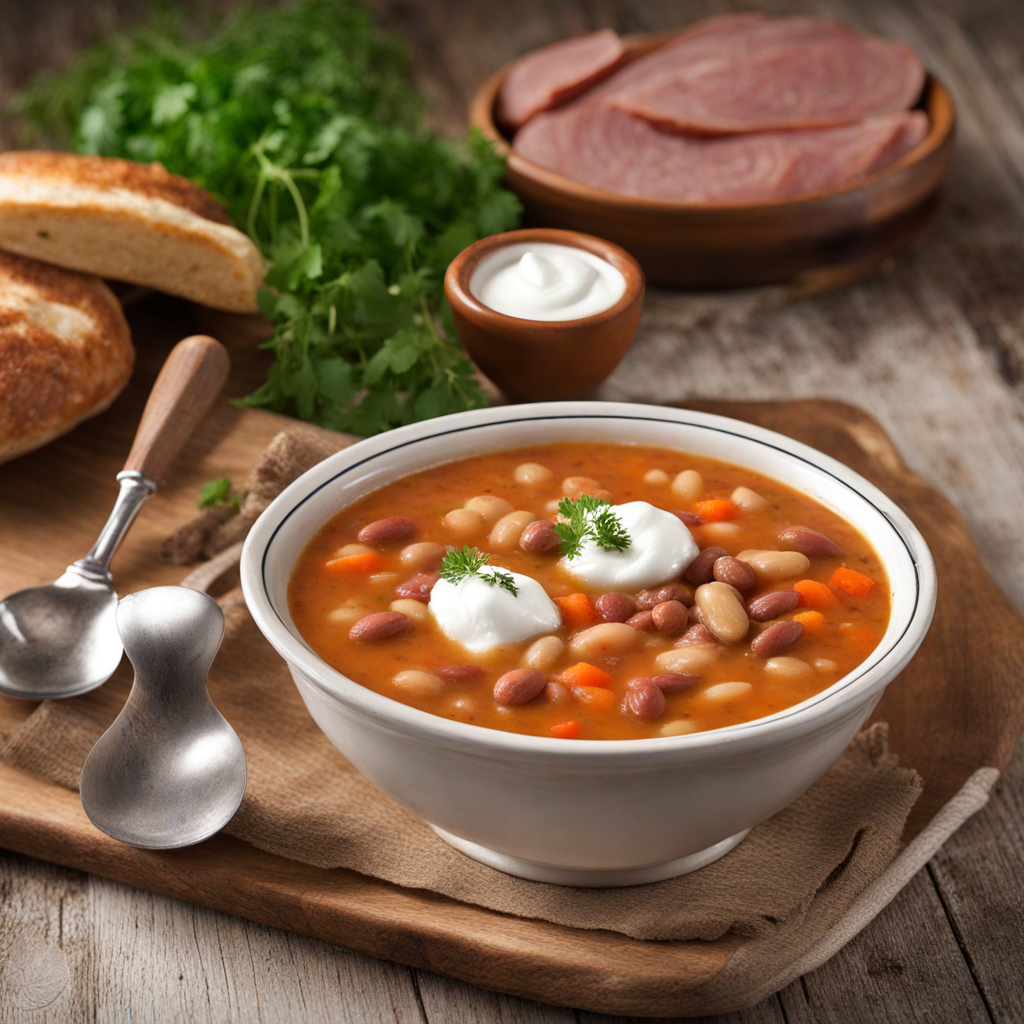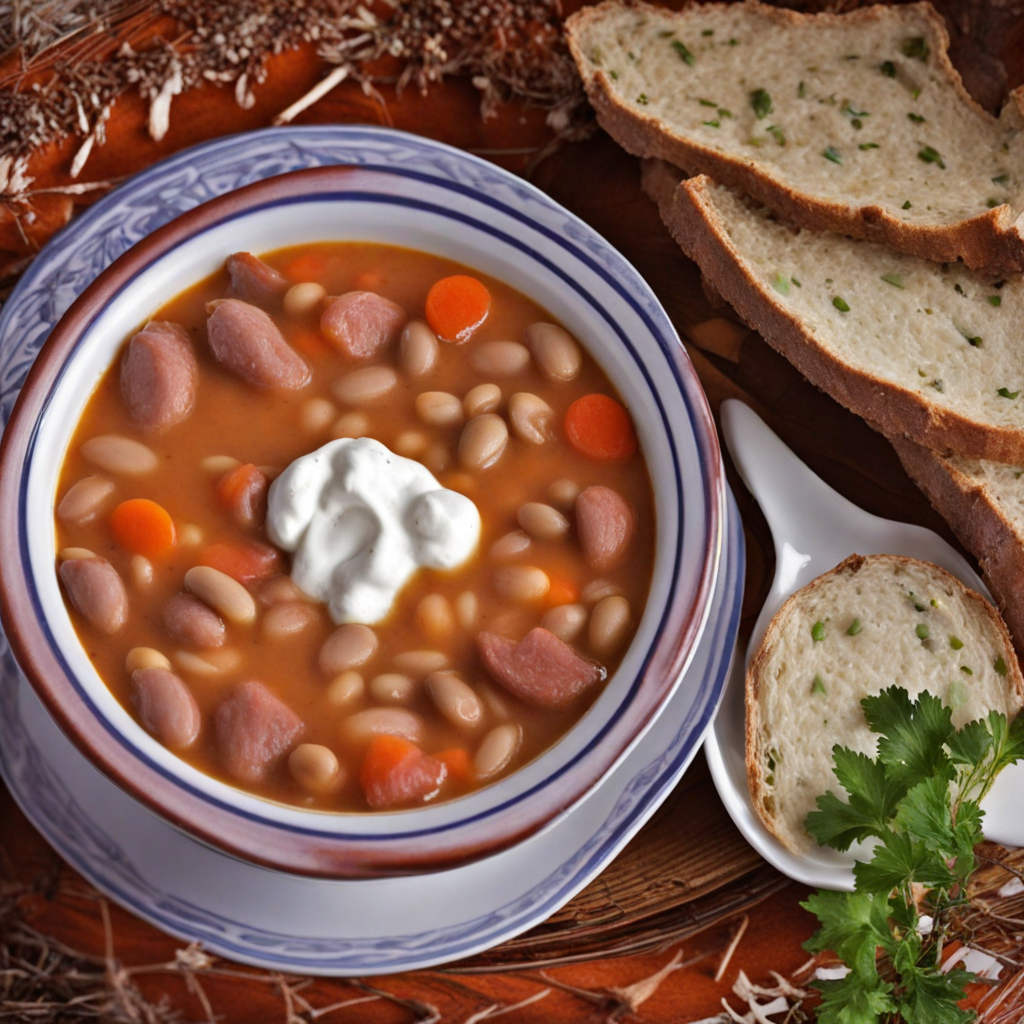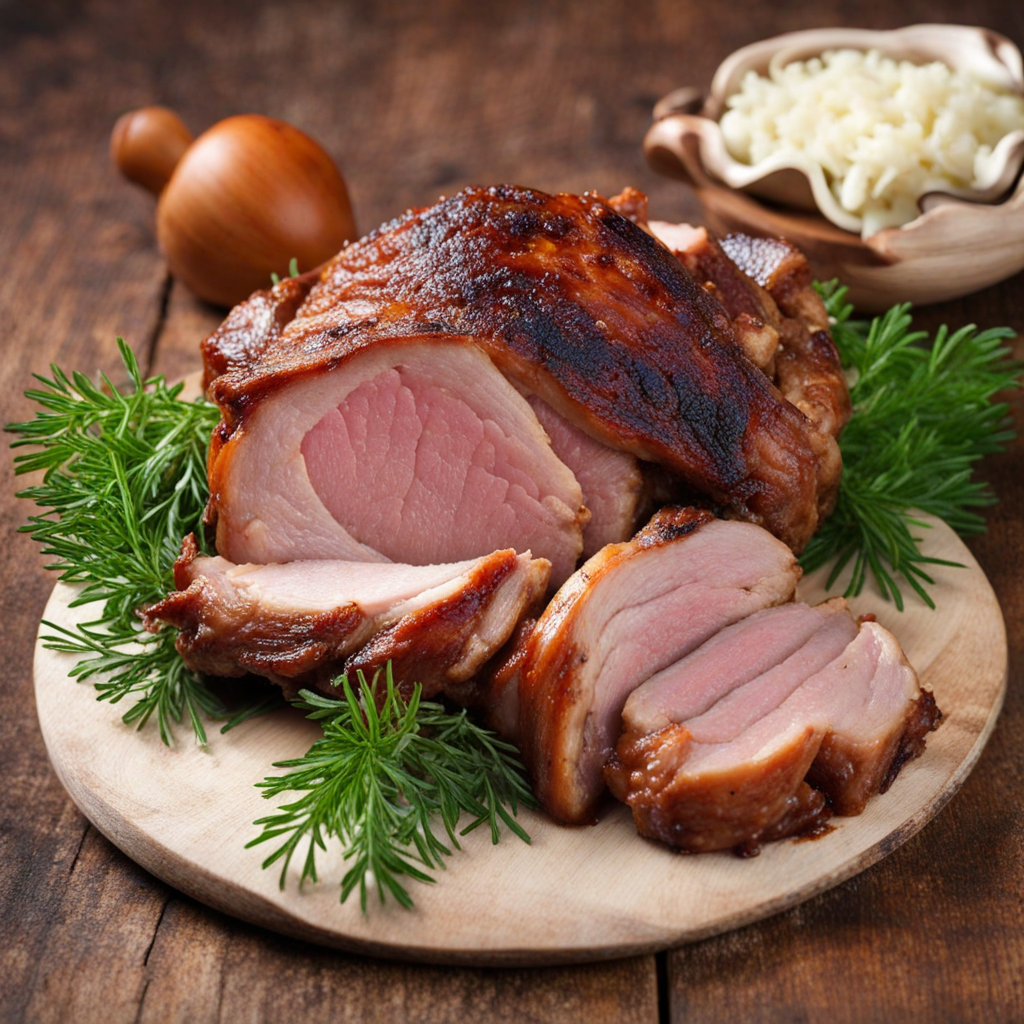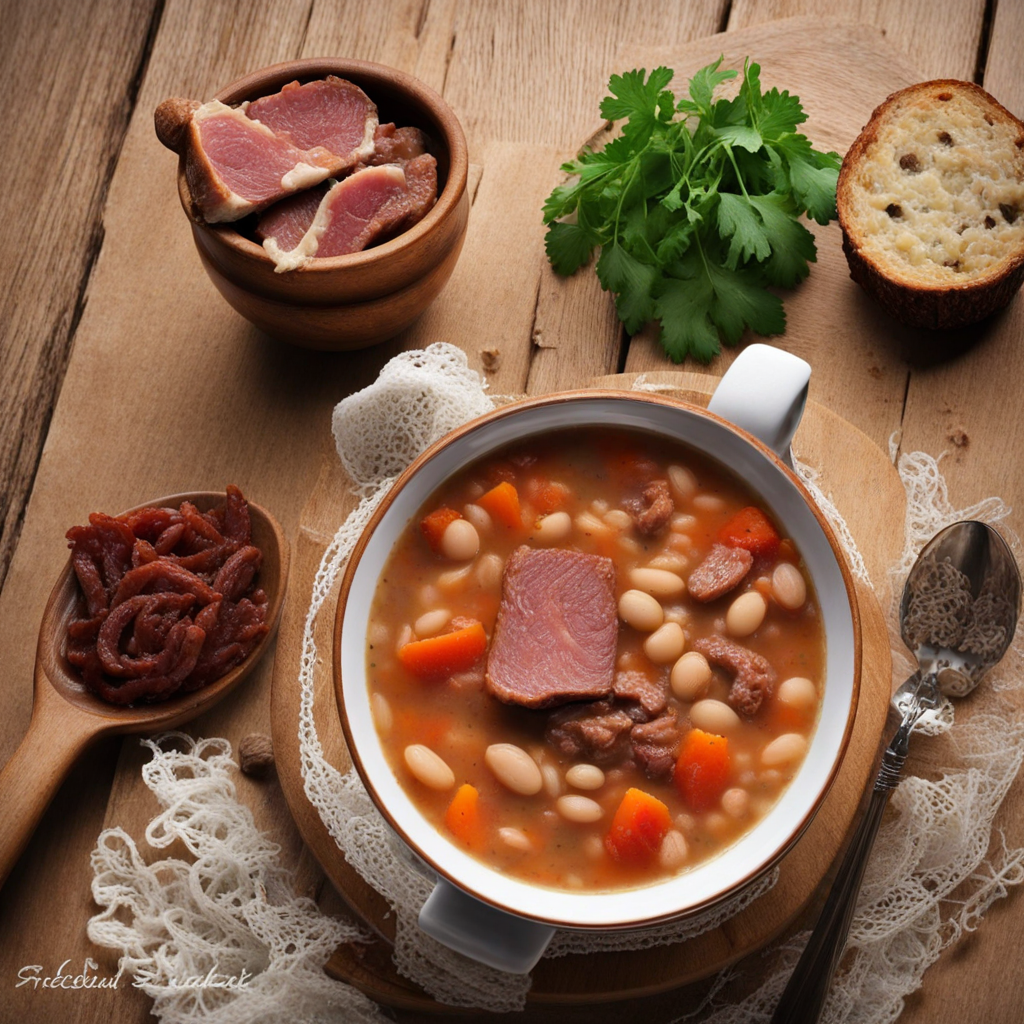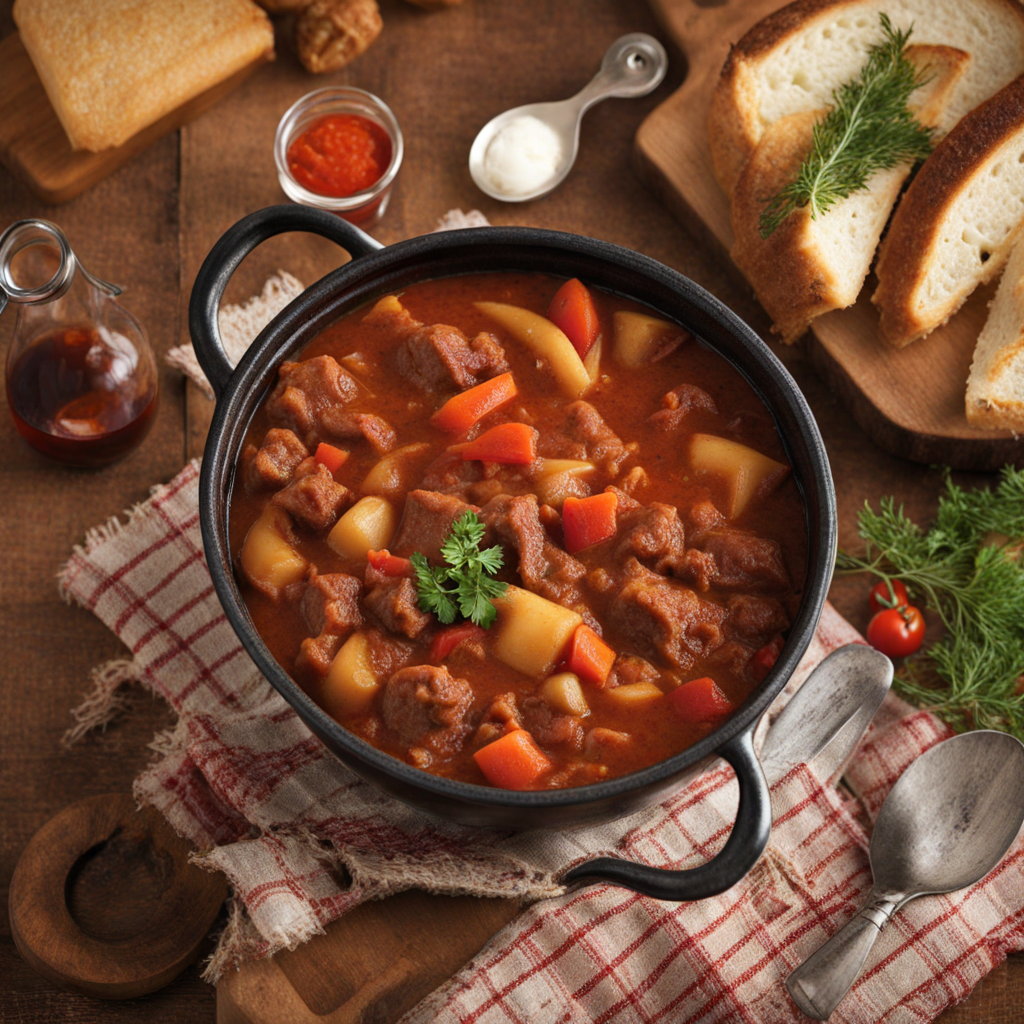Fazuľová Polievka
Fazuľová Polievka, or Slovak bean soup, is a hearty and comforting dish that showcases the rich culinary heritage of Slovakia. Made primarily from white or yellow beans, this soup is simmered to perfection with a blend of aromatics like onions, garlic, and carrots. The beans provide a creamy texture, while the vegetables add layers of flavor, creating a warm and satisfying bowl that is perfect for chilly days. Often seasoned with a touch of paprika and herbs, the soup is both savory and slightly smoky, reflecting the rustic charm of Slovak cuisine. One of the delightful aspects of Fazuľová Polievka is its versatility. While the basic recipe is simple and straightforward, many families have their own variations, incorporating ingredients like potatoes, smoked meats, or even sausage for added depth and richness. The soup can be enjoyed on its own or served alongside crusty bread, which is perfect for dipping and soaking up the flavorful broth. Each spoonful offers a taste of home, evoking warmth and nostalgia for those familiar with the dish. Furthermore, Fazuľová Polievka is not only delicious but also nutritious, making it an excellent choice for a wholesome meal. Beans are packed with protein and fiber, contributing to a filling dish that sustains energy throughout the day. For those looking to explore new flavors, this Slovak soup serves as a gateway to the country's culinary traditions, inviting you to savor the blend of simple ingredients that come together to create something truly special.
How It Became This Dish
Fazuľová Polievka: A Culinary Journey Through Slovakia #### Origins Fazuľová polievka, or bean soup, holds a cherished place in Slovak cuisine, emblematic of the hearty, rustic dishes that define the nation’s culinary heritage. The history of fazuľová polievka can be traced back to ancient agricultural practices in Central Europe, particularly in the fertile valleys and rolling hills of Slovakia. Beans, one of the oldest cultivated crops, were integral to the diets of early Slovak communities, providing essential protein, fiber, and nutrients. The cultivation of beans in Slovakia likely began with the arrival of the first agricultural societies around 4000 BC. Archaeological evidence suggests that varieties of beans were domesticated in the Americas and spread across the globe, eventually reaching Europe through trade routes. By the Middle Ages, beans had become a staple in the Slovak diet, particularly among the peasantry, who relied on versatile, inexpensive, and nutrient-rich foods. #### Cultural Significance Fazuľová polievka is more than just a meal; it embodies the very essence of Slovak culture and tradition. The soup is often associated with communal gatherings and celebrations, particularly during harvest festivals and family feasts. In a country where hospitality is a cornerstone of culture, serving a warm bowl of fazuľová polievka to guests symbolizes generosity and care. Traditionally, the soup is prepared with dried beans, often complemented by potatoes, carrots, onions, and sometimes smoked meats like sausages or bacon. This combination of ingredients reflects the resourcefulness of Slovak households, where every scrap of food was utilized to create nourishing meals. Fazuľová polievka also has a strong connection to seasonal changes and local customs. In winter, it serves as a warming comfort food, while in the summer, lighter versions may be prepared with fresh vegetables from local gardens. The seasonal adaptation of this dish illustrates the Slovak people's deep-rooted relationship with the land and their agricultural practices. #### Development Over Time As Slovakia transitioned through various historical phases, including periods of foreign domination and political upheaval, the preparation and consumption of fazuľová polievka evolved, reflecting broader social changes. During the Austro-Hungarian Empire, culinary influences from neighboring countries began to permeate Slovak cuisine. Ingredients such as paprika and garlic were introduced, adding depth and complexity to traditional dishes, including fazuľová polievka. In the post-World War II era, the socialist regime significantly impacted food production and consumption in Slovakia. The emphasis on collectivization and industrial farming led to changes in agricultural practices, with a focus on efficiency over variety. While this resulted in increased accessibility to ingredients, some regional varieties of fazuľová polievka began to diminish, giving way to more standardized recipes. However, the fall of communism in 1989 marked a renaissance of traditional Slovak cuisine. As the nation opened up to global influences, chefs and home cooks alike sought to revive and innovate upon traditional recipes. Fazuľová polievka experienced a resurgence in popularity, with chefs experimenting with gourmet interpretations while preserving the essence of the authentic dish. Today, it is common to find fazuľová polievka on the menus of both traditional Slovak eateries and modern bistros, where chefs might incorporate local artisanal products or contemporary cooking techniques. The dish has also found its way onto the international stage, with Slovak expatriates and food enthusiasts sharing it at cultural festivals around the world, further solidifying its place as a symbol of Slovak identity. #### Variations and Modern Interpretations While the basic ingredients of fazuľová polievka remain consistent, regional variations abound. In Eastern Slovakia, for instance, the soup may be enriched with the addition of smoked meats or spices unique to the area, while Western Slovak recipes might lean towards a vegetarian version, highlighting the natural flavors of the beans and vegetables. The modern culinary scene in Slovakia has embraced these variations, leading to creative adaptations of fazuľová polievka that reflect both tradition and innovation. For instance, some chefs experiment with alternative beans, such as chickpeas or lentils, while others incorporate local herbs and spices to create a fusion of flavors. Additionally, there has been a growing trend towards healthier cooking, prompting many to substitute traditional ingredients with lighter alternatives. For example, coconut milk may be used in place of cream, and whole grains might be introduced for added nutrition. Such adaptations demonstrate the flexibility of fazuľová polievka as a dish that can evolve to meet contemporary dietary preferences while retaining its core identity. #### Conclusion Fazuľová polievka stands as a testament to the richness of Slovak culinary heritage, encapsulating the resilience, creativity, and communal spirit of the Slovak people. Its roots in ancient agricultural practices, its role in cultural traditions, and its evolution through historical changes all contribute to its significance as a beloved national dish. As Slovakia continues to navigate the complexities of modernity, fazuľová polievka remains a comforting reminder of home for many, whether served in a bustling family kitchen or a chic urban café. The soup not only nourishes the body but also nourishes the soul, connecting generations through shared memories and flavors. As Slovaks both at home and abroad embrace this timeless dish, fazuľová polievka will undoubtedly continue to evolve, reminding us of the importance of tradition while celebrating the creativity of the present.
You may like
Discover local flavors from Slovakia


